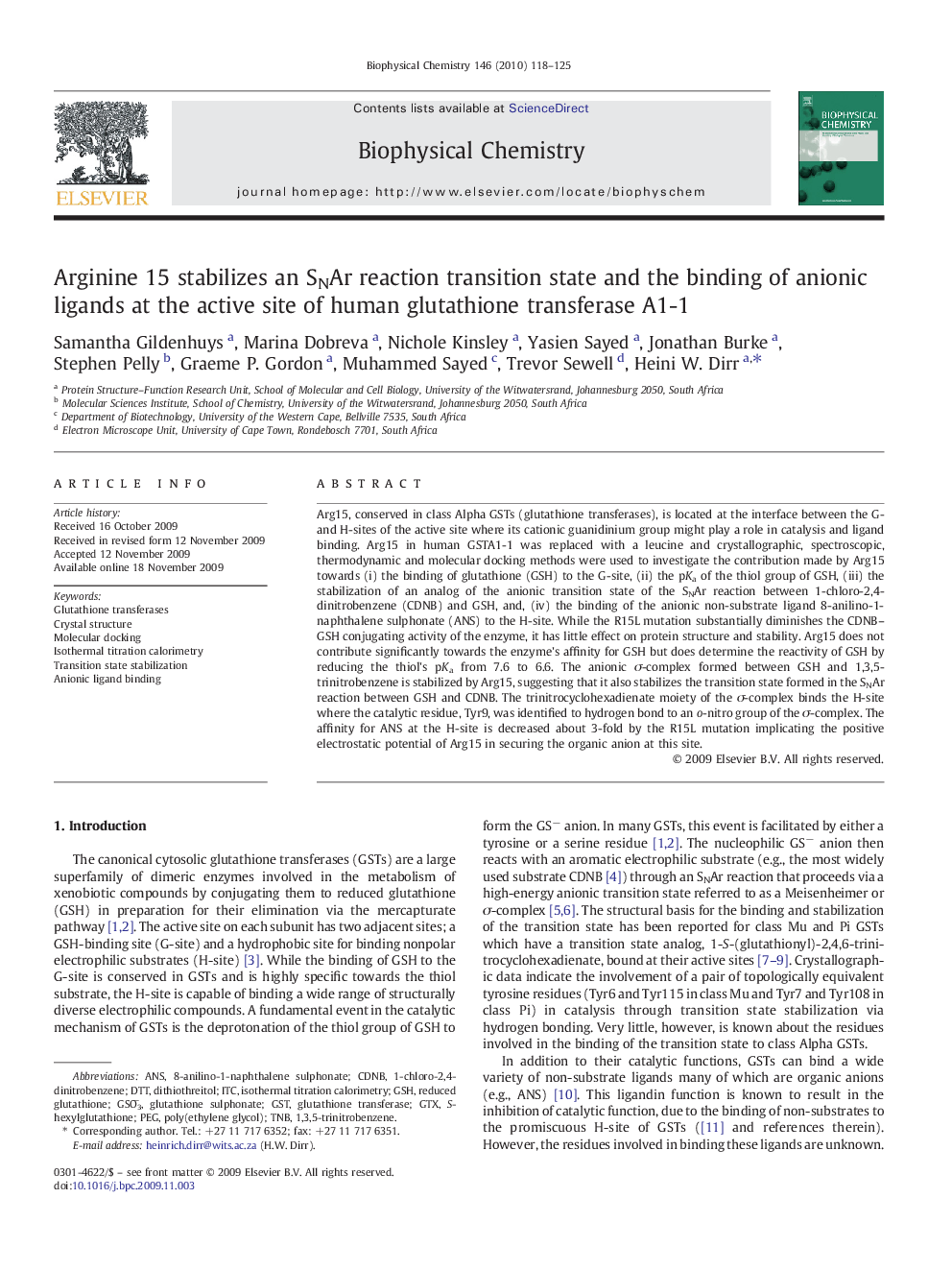| Article ID | Journal | Published Year | Pages | File Type |
|---|---|---|---|---|
| 5371673 | Biophysical Chemistry | 2010 | 8 Pages |
Arg15, conserved in class Alpha GSTs (glutathione transferases), is located at the interface between the G- and H-sites of the active site where its cationic guanidinium group might play a role in catalysis and ligand binding. Arg15 in human GSTA1-1 was replaced with a leucine and crystallographic, spectroscopic, thermodynamic and molecular docking methods were used to investigate the contribution made by Arg15 towards (i) the binding of glutathione (GSH) to the G-site, (ii) the pKa of the thiol group of GSH, (iii) the stabilization of an analog of the anionic transition state of the SNAr reaction between 1-chloro-2,4-dinitrobenzene (CDNB) and GSH, and, (iv) the binding of the anionic non-substrate ligand 8-anilino-1-naphthalene sulphonate (ANS) to the H-site. While the R15L mutation substantially diminishes the CDNB-GSH conjugating activity of the enzyme, it has little effect on protein structure and stability. Arg15 does not contribute significantly towards the enzyme's affinity for GSH but does determine the reactivity of GSH by reducing the thiol's pKa from 7.6 to 6.6. The anionic Ï-complex formed between GSH and 1,3,5-trinitrobenzene is stabilized by Arg15, suggesting that it also stabilizes the transition state formed in the SNAr reaction between GSH and CDNB. The trinitrocyclohexadienate moiety of the Ï-complex binds the H-site where the catalytic residue, Tyr9, was identified to hydrogen bond to an o-nitro group of the Ï-complex. The affinity for ANS at the H-site is decreased about 3-fold by the R15L mutation implicating the positive electrostatic potential of Arg15 in securing the organic anion at this site.
